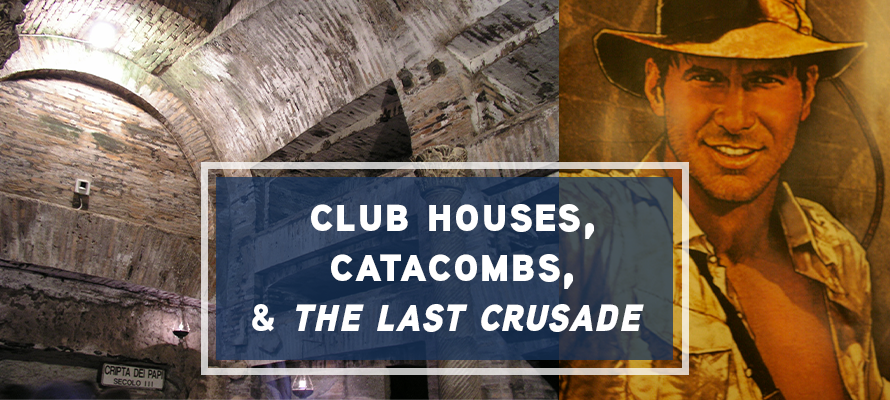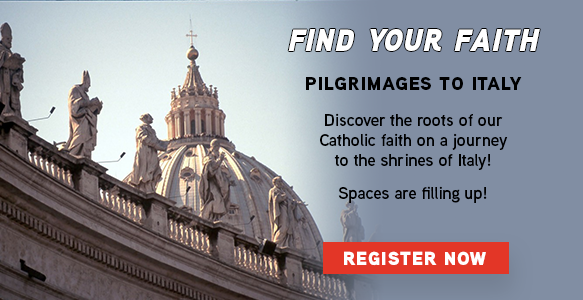
As a young child, I loved to play in forts. My mom would often come home and find all of her cushions pulled off the couch and in some sort of configuration that my younger brother and I had found satisfactory (and architecturally stable). Blankets would drape from our cushion roof to the tall barstools that usually lined the kitchen counter, and every pillow in the house would be gathered and placed carefully within our new hangout. This sort of world catered to us little people. It was always so fun to have this tiny house within my parents’ home, one that only my brother and I could access, a secret clubhouse that only we could be a part of – a place where we made the rules.
I couldn’t help but feel that same wonder, excitement, and exclusivity when I plunged deep into the earth of the San Sebastian Catacombs. It was three years ago in the May heat of Rome when my parish was taking a pilgrimage through Italy. As we walked down the stairs that led to the catacombs, we were surprised by a gust of cool air, met with the smell of soil, and welcomed into the winding hallways of this ancient Christian clubhouse.
I felt like Indiana Jones exploring a long forgotten archaeological treasure as my group weaved its way through the carved earth, inspecting the stacked rectangle graves that lined each wall. Before long, our guide was pointing out the Christian symbols carved upon the walls – small fish, anchors, and doves that stood for Christ, hope, and believers, respectively. Every so often, we would be treated to little ancient shout-outs, actual hand-carved words that an ancient brother or sister wrote invoking Sts. Peter and Paul or Christ Himself. As we explored deeper and deeper, we came upon a little village in the catacombs; individual houses (forts within a fort!) where early Christians hid from their persecutors, celebrated their faith, and buried their loved ones that had encountered martyrdom.
The San Sebastian Catacombs emerged at the end of the 2nd century during the reign and persecution of Diocletian. First used as a mine, it became a pagan cemetery before it was transformed into a safe haven and resting place for endangered Christians. Believed to have housed the remains of Sts. Peter and Paul at one time, it also contained the body of its namesake. St. Sebastian was a Roman solider whose secret belief in Christianity allowed him to convert other soldiers and nobles, minister to captives, and help bury martyrs. When Diocletian discovered the actions of this rogue soldier, he ordered St. Sebastian to be pierced by arrows and later scourged to death. Today, the relics of St. Sebastian and the arrows that led to his martyrdom are housed right above the catacombs, in the Basilica of St. Sebastian.
Just like I did as a child, the early Christians created “forts” that only they could enter. There they found safety and community and made their own rules (or rather, followed His rules). When the danger of deadly persecution ended, they exited their hiding places and created an even better space that all the world could see and enter: a church. A site where all were welcomed, where rules led to joy and freedom, and where generations of Christians were formed and flourished. A place that was no secret at all.
The world today brings about that temptation to create "forts." We want Christ to be present in our homes and within our families, especially when the world outside wants nothing to do with our Savior. It can be difficult to be that bright light for Christ when we leave those safe places. As we look back on the actions of our earliest brothers and sisters, do we have the courage to live our faith on the outside? To emerge from our forts? If there’s one thing I learned in the depths of the catacombs, it’s that the faith lives of these brave Christians don’t belong in a museum, boxed up and sealed away, but out in the open for others to see and to be welcomed into, for generations into the future. (I think even Indy would agree with me on that!)




